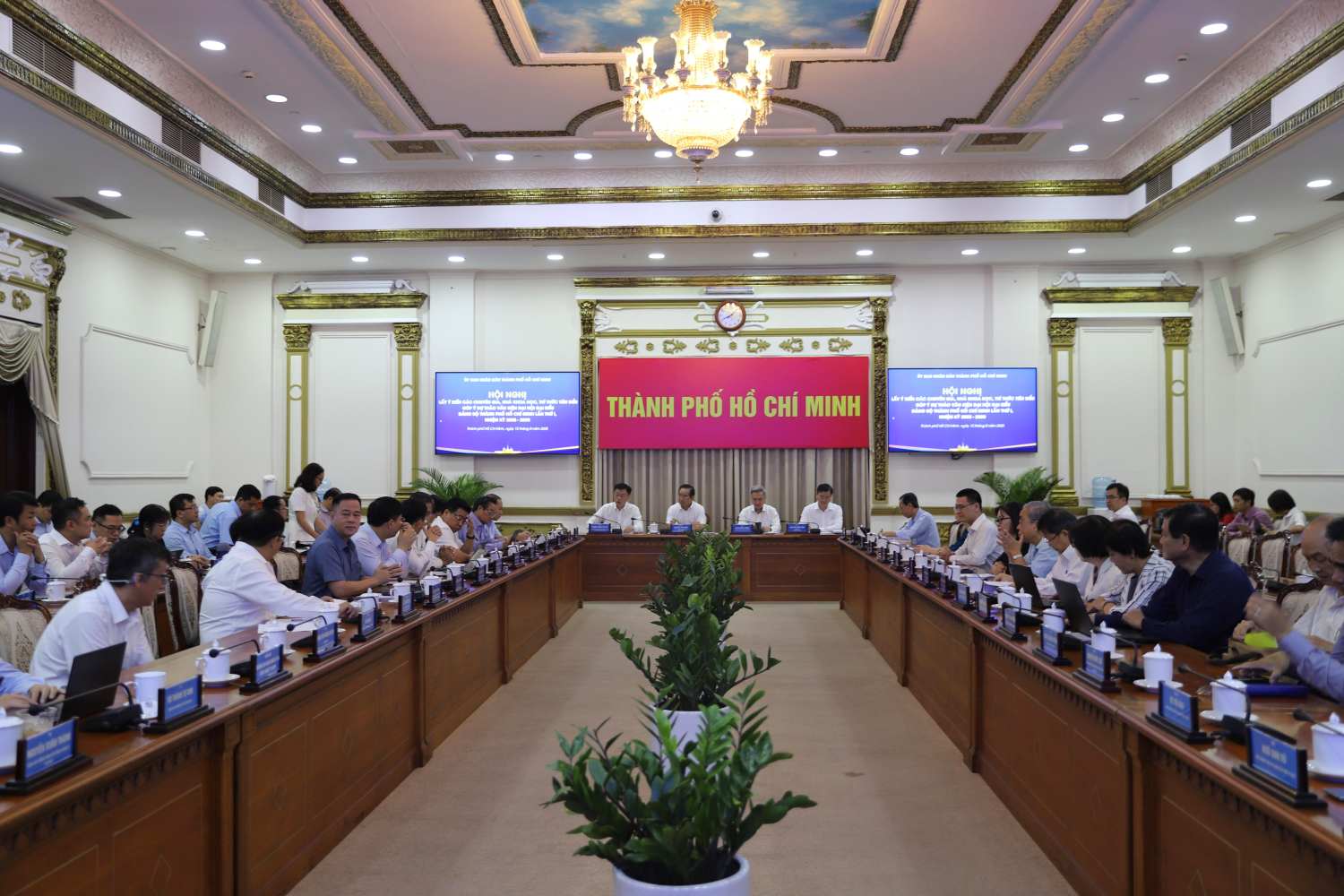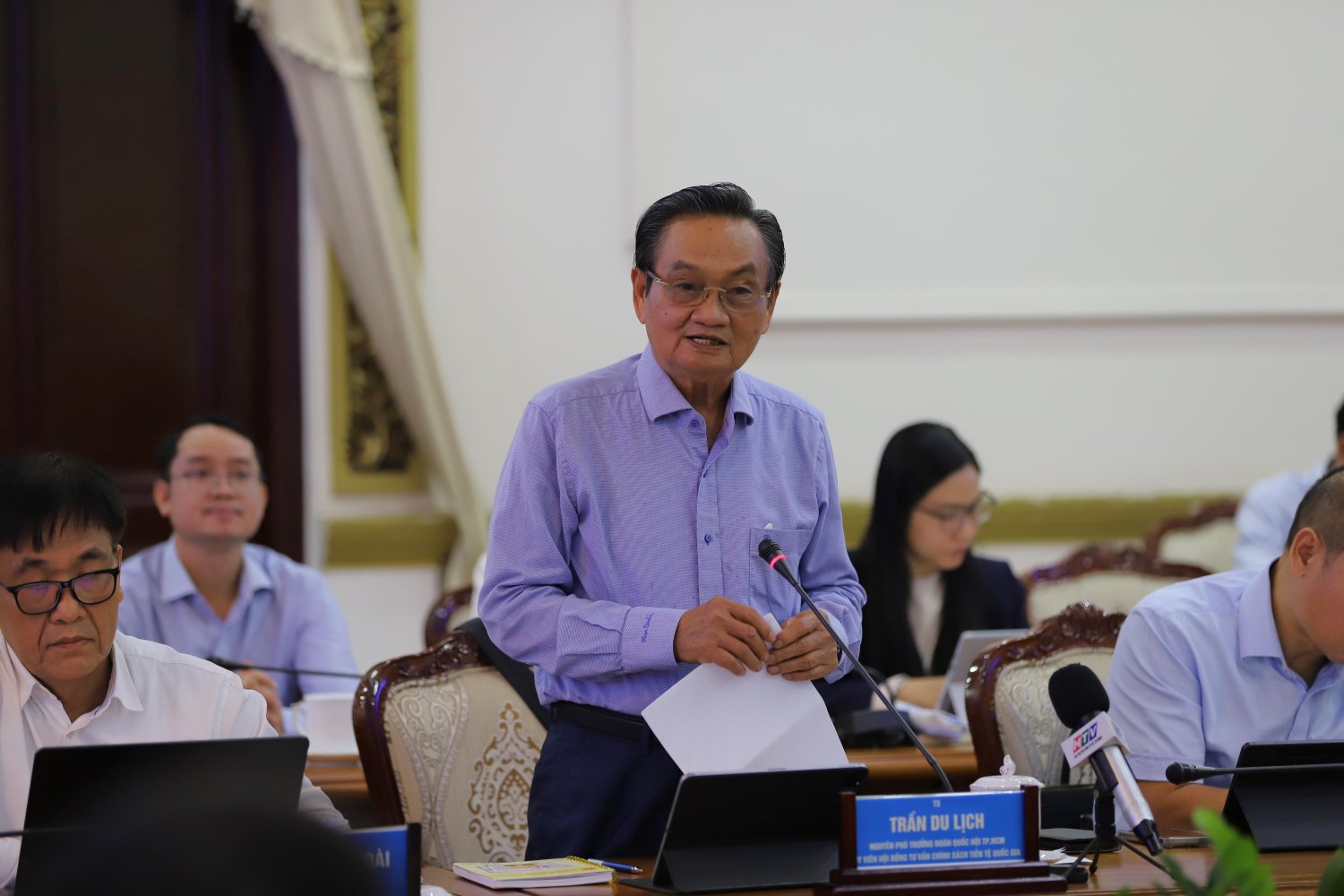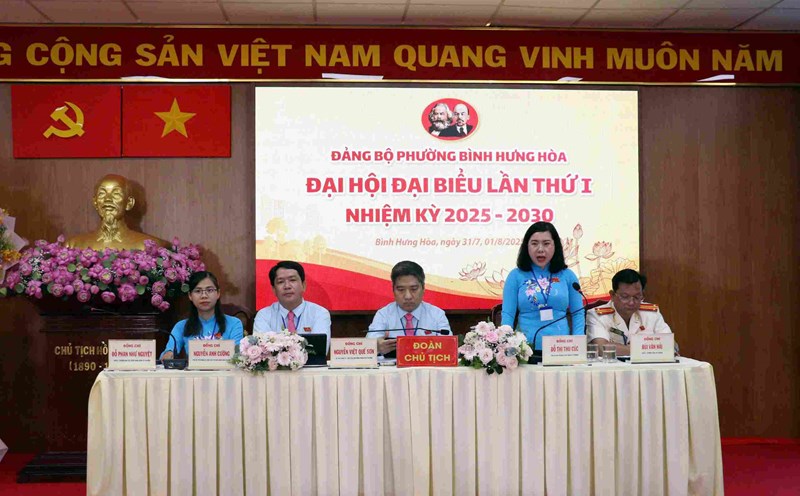space for development tripled On August 13, the Ho Chi Minh City People's Committee held a conference to collect opinions from experts, scientists, and outstanding intellectuals to contribute ideas to the draft documents of the 1st Ho Chi Minh City Party Congress, term 2025 - 2030.
Chairman of the Ho Chi Minh City People's Committee Nguyen Van Duoc said that this is the first Congress of Ho Chi Minh City after merging with Binh Duong and Ba Ria - Vung Tau.
The area of the new city has increased more than 3 times, opening up a large development space, allowing reasonable assignment of functions, support and sharing advantages between regions.
According to the orientation, the new city will be an international "super urban area" with three main functional areas and a special zone:
Ho Chi Minh City is a central urban area, core urban area, financial and high-tech center.
The Ba Ria - Vung Tau region is the capital of the marine economy, developing marine tourism, clean energy (especially offshore wind power), seaports, oil and gas.
Binh Duong area is a high-tech industrial center.
Con Dao Special Zone is a resort tourism paradise.
The document aims to build a new prosperous, civilized, happy and affectionate Ho Chi Minh City; inherit the achievements of the three localities, while innovating thinking and creativity to solve new challenges.
The city focuses on 7 breakthrough programs: improving policies and institutions; developing infrastructure; applying science and technology; attracting high-quality human resources; promoting the private economy; developing green - sustainable urban areas; and cultural industry.

Director of the Ho Chi Minh City Institute for Development Studies Truong Minh Huy Vu said that the draft sets out 23 targets for socio-economic development, environment, national defense - security, and Party building.
In the economic group, the average GRDP growth rate is about 10%/year; by 2030, the average GRDP per capita will reach 14,000-15,000 USD; General factor productivity (TFP) contributes 55-60% to growth; the digital economy accounts for 30-40%; research and development expenditure will reach 2-3% of GRDP,...
Taking advantage of The Four pillars to break through
Dr. Tran Du Lich - Chairman of the National Assembly's Advisory Council for the implementation of Resolution 98, commented that the double-digit GRDP growth rate is political determination and is completely feasible if the "four pillars" are well utilized (4 Resolutions of the Politburo: Resolution No. 57-NQ/TW, Resolution No. 59-NQ/TW, Resolution No. 66-NQ/TW; Resolution No. 68-NQ/TW).
Mr. Lich proposed that the document should integrate the strengths of all three regions, closely link with Dong Nai and Tay Ninh, and at the same time develop a parallel implementation plan to implement immediately after the Congress.

Professor Nguyen Trong Hoai - former Vice Principal of Ho Chi Minh City University of Economics, emphasized the factor of " daring to think, daring to do" - the identity of the city needs to be included in the document, especially when proposing outstanding mechanisms such as Resolution 98/2023/QH15, Can Gio port project, TOD model.
Mr. Nguyen Trong Hoai said that to achieve the TFP goal of contributing 55 - 60%, the City must build a governance and monitoring ecosystem, while training human resources with digital skills and technology.
Dr. Vu Thanh Tu Anh - Fulbright University warned that Ho Chi Minh City is gradually losing its advantage over some other localities. He suggested that the City must restore its pioneering position, make the most of the advantages of the private economic sector, the education - training system, science - technology to effectively implement the "four pillars".











